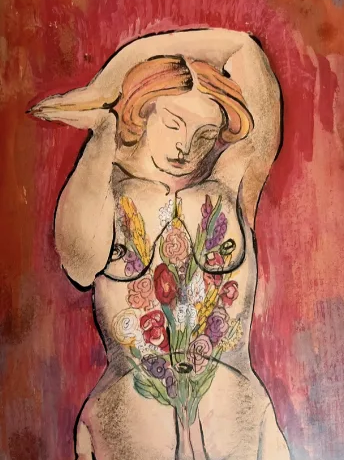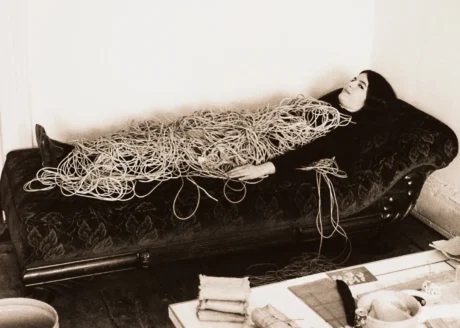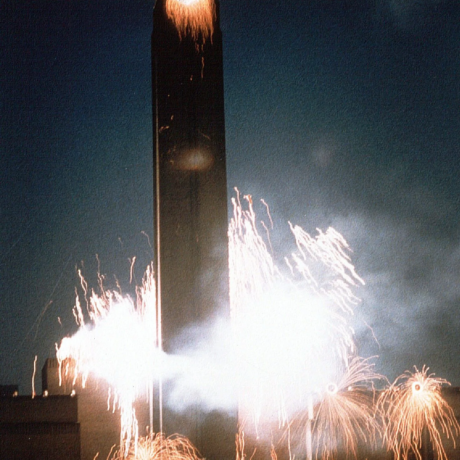It’s Halloween; what better time to reflect on all of the sexy, bloody, vengeful women that Lucifer has successfully lured into…Feminism?
This December, Robert Egger’s remake of the canonical German Expressionist silent film by F.W. Murnau, Nosferatu (1922), is set to hit the big screen. Below, Lydia Eliza Trail guides us through a brief history of cult classics engaging with ideas of Satanic Feminism as we look forward to its release.
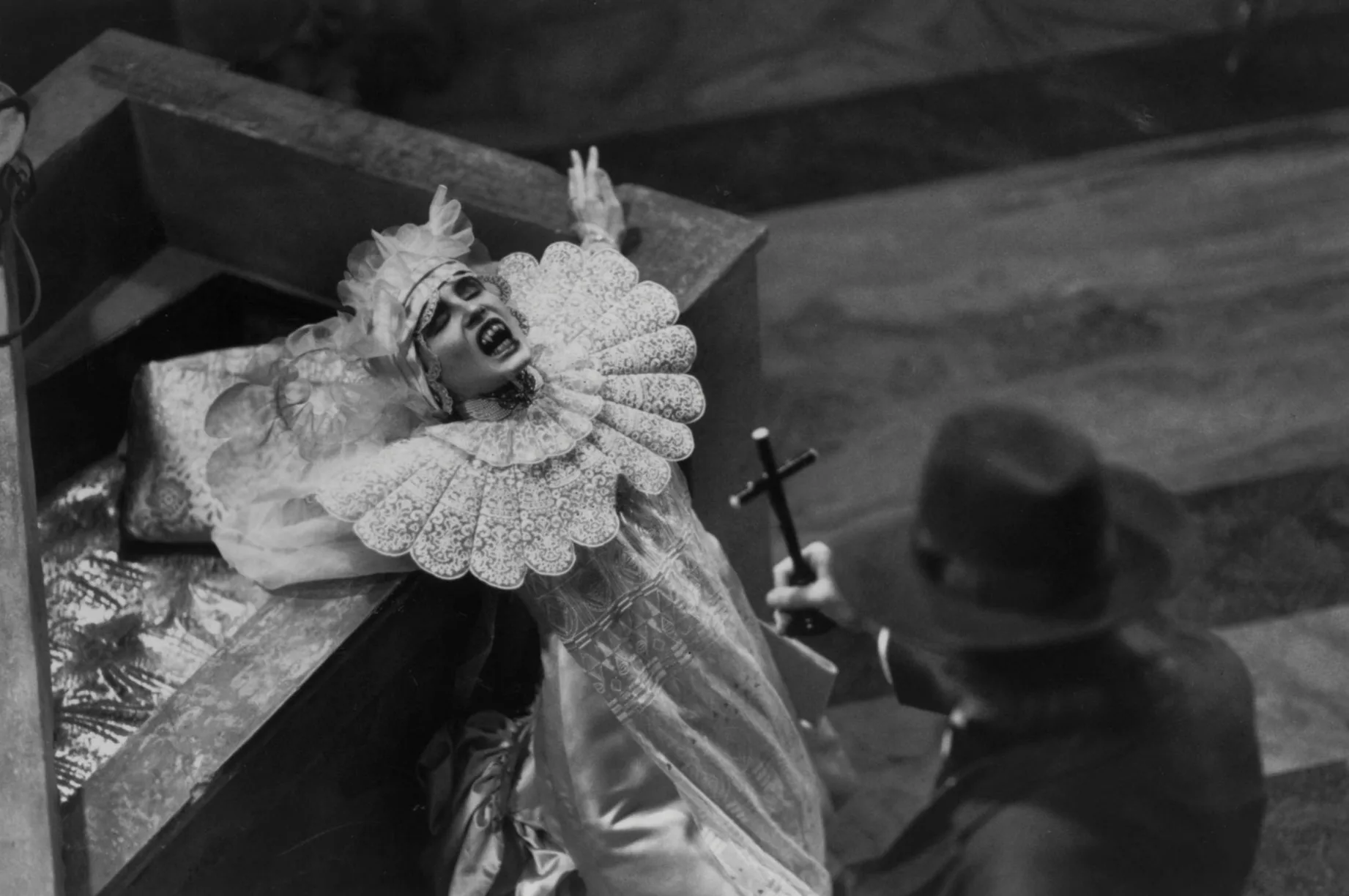
In the trailer for Nosferatu (2024), Lily Rose-Depp clings to her husband’s knees and looks up, delivering a line of ultimate cuckoldery: “For you could never please me as he could”. She looks perversely happy, eyes filled with mania. She speaks of Satan. Roger Egger’s remake of the canonical German Expressionist silent film by F.W. Murnau, Nosferatu (1922) – dubbed “The Original Vampire Film”- will premiere in December 2024. This isn’t the first time Satan has tempted a woman on screen; the 20th century has a long list of films depicting the vampire, or satan, as a liberator of women.
Eggers and Murnau before him pay homage to Bram Stoker’s epic tale of transgression and desire, Dracula (1897). Stoker’s masterpiece is a story of Victorian anxieties surrounding morality thinly disguised as a high gothic Romance. As scholar Carol A. Senf writes, Bram Stoker undermines “accepted cultural beliefs about the role women should play within society.”
Despite Stoker’s intentions, the novel has come to be celebrated in popular culture as a story of anti-Christian and anti-conservative motifs. The protagonist’s name, “Dracula,” is a diminutive form of the Romanian word for devil. Dracula’s prey, Mina Harker (in Nosferatu, Ellen Hutter), has a relationship with the count fuelled by desire that is often seen as liberating from the shackles of domesticity. To some, Dracula is the antihero of Satanic Feminism. He is Lucifer, a liberator of women.
The idea of Woman as particularly receptive to Satan’s temptation, the female body as a conduit for sin, originated in Genesis’s tale of the fall. In the 19th century, Eve’s temptation was reclaimed by gothic literature. Before Dracula, there was Sheridan Le Fanu’s Carmilla (1872), in which a lesbian Vampire infiltrates the household of a noble family, threatening to seduce their innocent daughter. Like Dracula, Carmilla has a solid aversion to Christianity and a palpable aura of libidinality, as seen in the film adaptation, The Vampire Lovers (1970). In art, Satan’s relationship to female liberation and eroticism is seen in Felician Rop’s Les Sataniques (c.1880), where women connive in sabbaths, erotic orgies and witchcraft. In a more comic note Francisco Solano Lopez’s erotic comic series Young Witches (1993) depicts a witches sadistic boarding school. In surrealist artist Leonor Fini’s career, she combated the male surrealist trope of the femme infant. Fini loved to draw young witches learning to fly. For the inaugural issue of the feminist journal Sorcières: Les femmes vivant (1975), founded and edited by feminist critic and theorist Xavière Gauthier, Fini draws a female figure riding a broomstick with exposed breasts.
In the 21st century, the rise of the anti-hero, the rebel and the freak goes hand in hand with Vampirism. With the release of Stephanie Meyers’s Twilight (2005), the desire for the undead outsider became a topic of national fascination. Meyer’s protagonist, Bella, is less of a satanic feminist and more of a neo-conservatist vampire girlfriend. However, with Twilight came a trend in popular culture toward High gothic romance. In cinema, works like The Crow (2024), cast announcements for Emerald Fennel’s Wuthering Heights and Robert Pattinson’s role as a brooding, emo anti-hero in The Batman (2022) signal a renewed interest in the subversive power of the Gothic. Robert Eggers has previously had satanic heroines in The Witch (2015). Before Eggers, there was a host of cinema devoted to the topic of women’s relationship to the devil and temptation: Satanic Feminist cinema.
Below is a survey of films that engage with ideas of Satanic Feminism, emerging from Stoker’s original Dracula. Their heroines are Luciferian freethinkers, as in Don’t Deliver Us From Evil (1971). Some are vampires themselves, in the Iranian Feminist vampire tale A Girl Walks Home Alone at Night. Or pregnant with Satan’s offspring, as depicted in Polanski’s Rosemary’s Baby (1968). Women who collude with Dracula are portrayed as everything the dutiful housewife should not be, like Lucy in Francis Ford Coppola’s Dracula (1992) or Jennifer in Karyn Kusama’s Jennifer’s Body (2009). Some of these films present the satanic feminine in the form of the witch, or Satan’s concubine, as the anti-mother or devourer of children, see The Witch (2015), The Love Witch (2015) and Black Sunday (1960). Finally, perhaps the ultimate satanic feminist masterpiece, Isabella Adjani in Possession (1981). These films call into question the role of the devil in female liberation; as Marguerite Duras says, “Reverse everything. Make women the point of departure in Judging, make darkness the point of departure in judging what men call light.”
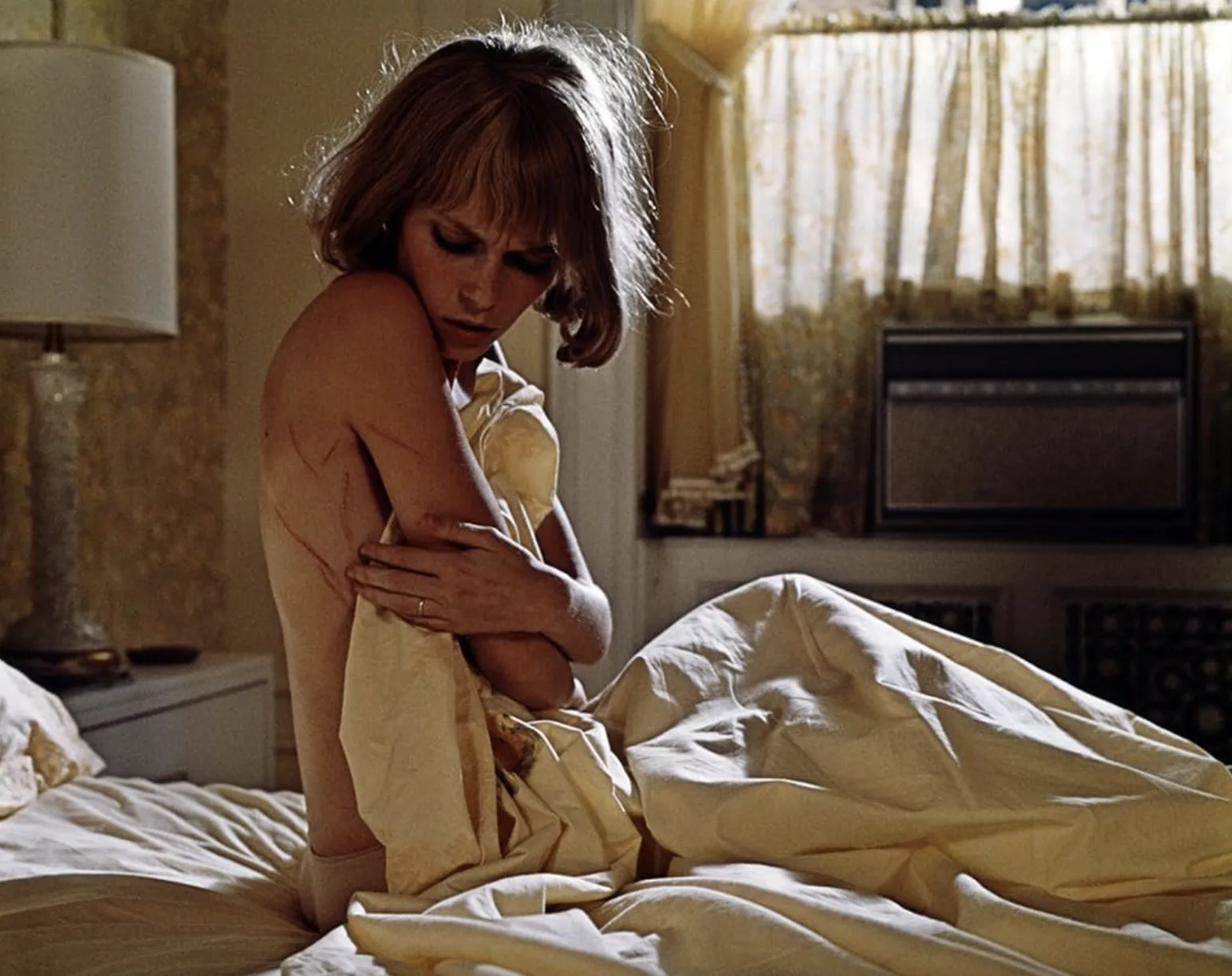
Rosemary’s Baby (1968) Directed by Roman Polanski
Based on the novel of the same name, published in 1967 by American writer Ira Levin, Rosemary’s Baby tells the story of a young pregnant mother who is plotted against by her elderly neighbours and husband. The story deals with themes of the occult, satanism, and witchcraft. Rosemary is raped in the night by a demonic presence summoned by the coven her husband and neighbours belong to – she eventually gives birth to the antichrist. It’s intense.
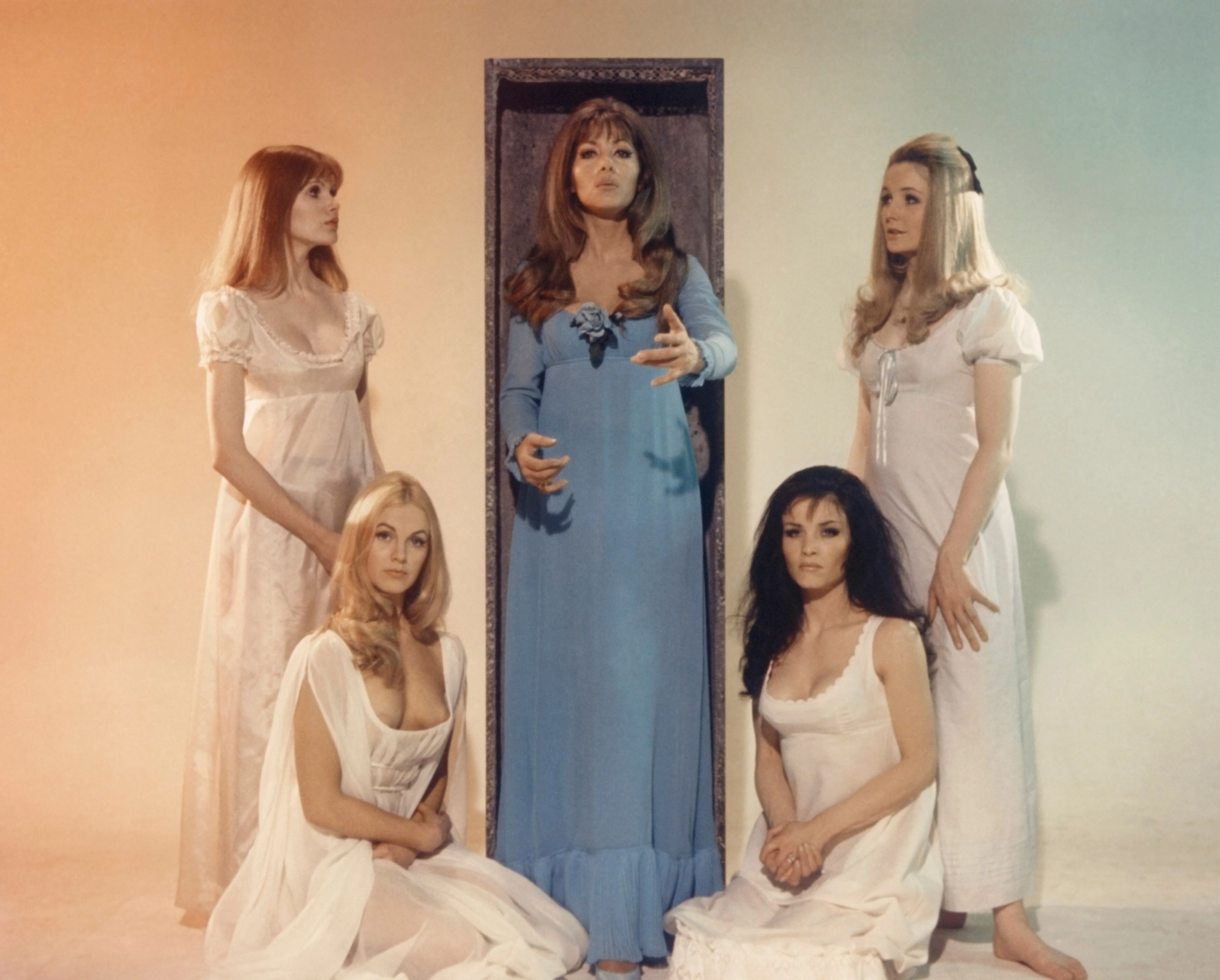
The Vampire Lovers (1970) Directed by Roy Ward Baker
The Vampire Lovers is a 1970 British Gothic horror film with all the camp trimmings, including blow-outs and billowing nightgowns. It is based on Sheridan Le Fanu’s novel Carmilla. Props to the costume designer for making a series of incredibly raunchy regency dresses.
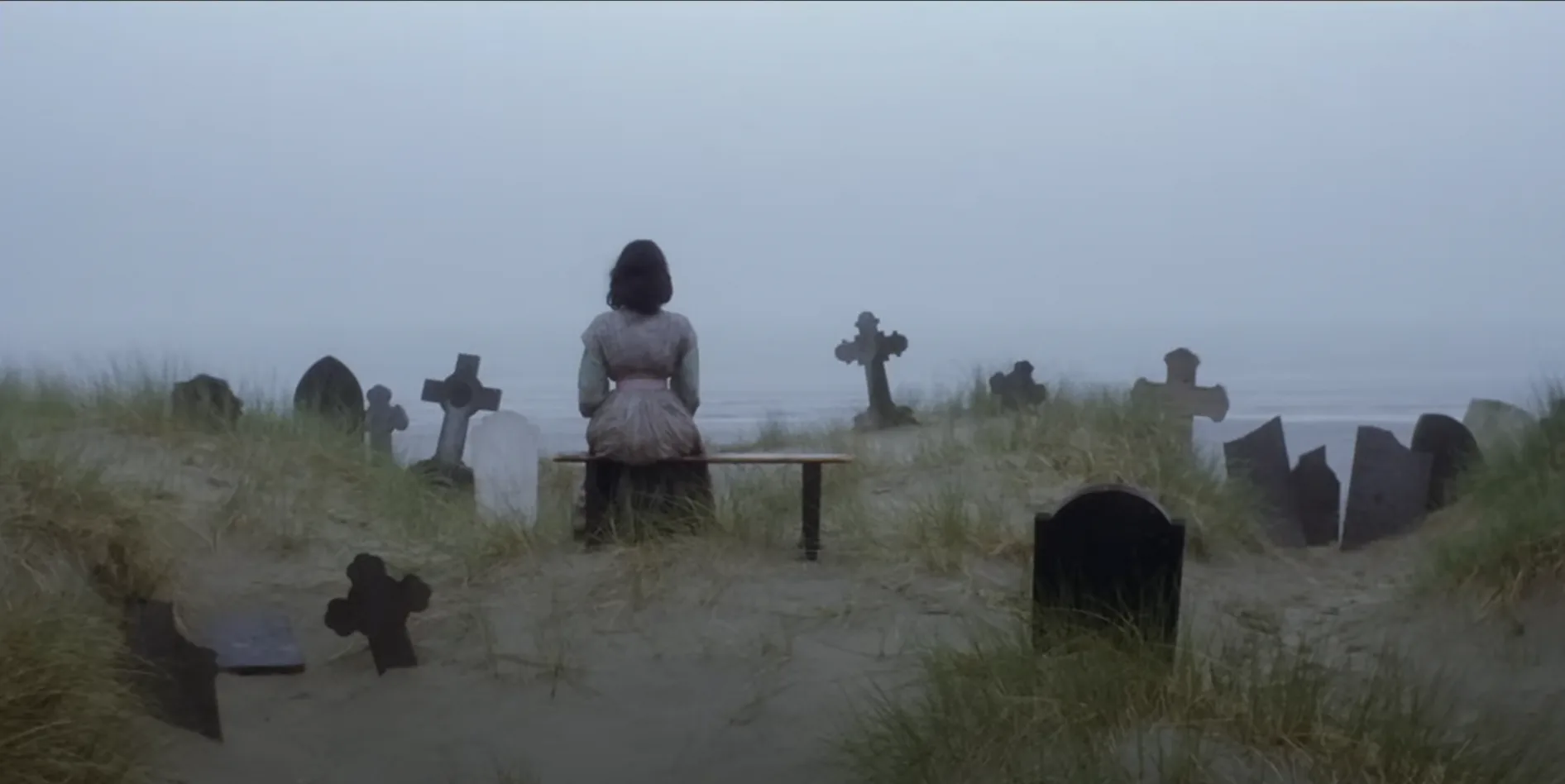
Nosferatu the Vampyre (1979) Directed by Werner Herzog
Isabelle Adjani features twice on this list, and for good reason. I’m not sure if Lily Rose-Depp can top her combination of highly feminine fragility and mania. F.W Murnau’s 1922 film inspired Werner Herzog’s gothic horror masterpiece. Gothicism is nothing without Herzog’s count, who has become the most iconic portrayal of Nosferatu.
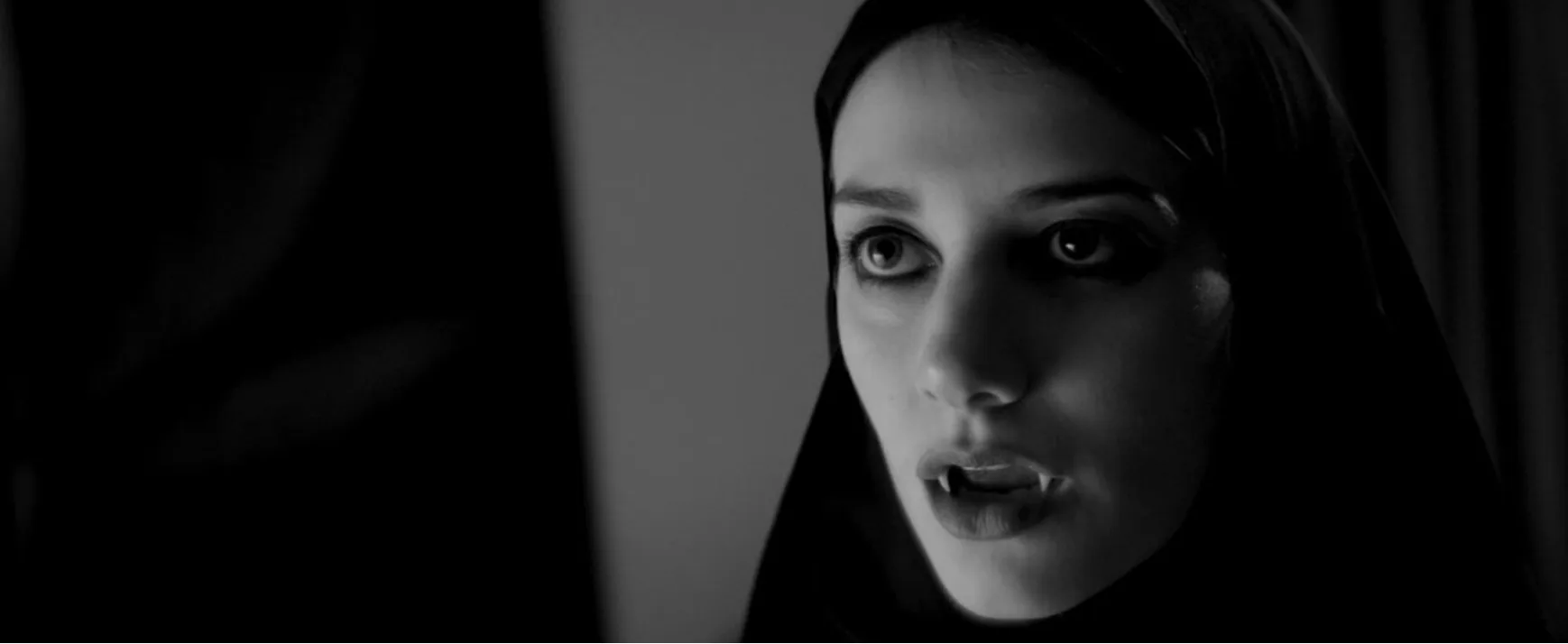
A Girl Walks Home Alone at Night (2014) Directed by Ana Lily Amirpour
This film is darkly comic. In the Iranian ghost-down “Bad City,” the girl (Sheila Vand) appears as a nearly immobile silhouette. She stalks men and bears her fangs. She is able to walk alone at night freely. Her first words to a boy with a skateboard are, “Are you a good boy?”. Perhaps the only convincing depiction of a contemporary female vampire, albeit one heavily influenced by Jim Jarmusch.
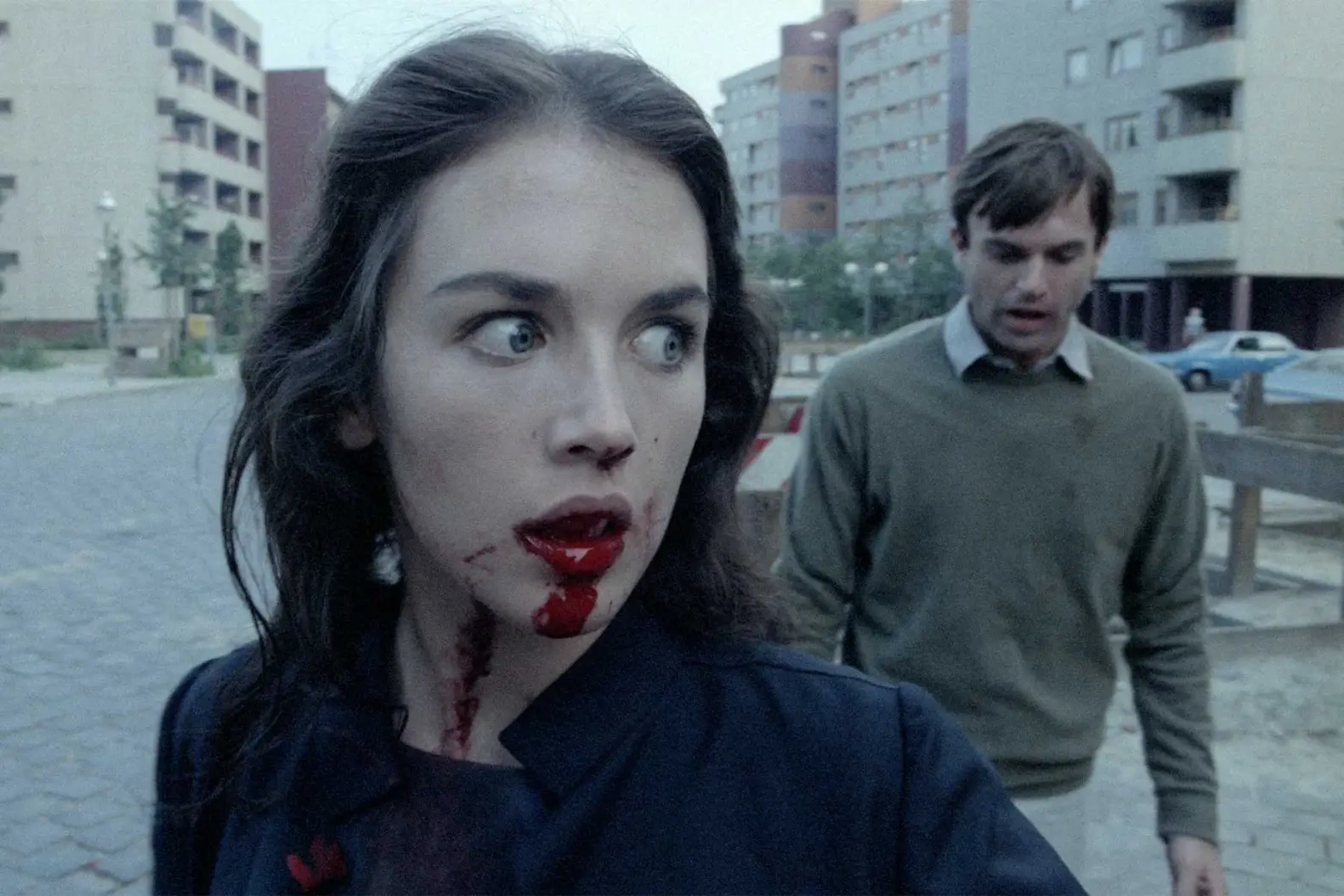
Possession, (1981) Directed by Andrzej Żuławski
Isabelle Adjani, queen of 80s psychological horror. She is the lover of a strange tentacled creature. As is common in Satanic Feminist films, the male protagonist is presented as a kind of insipid cuckold unable to satisfy his wife in the face of otherworldly presence.
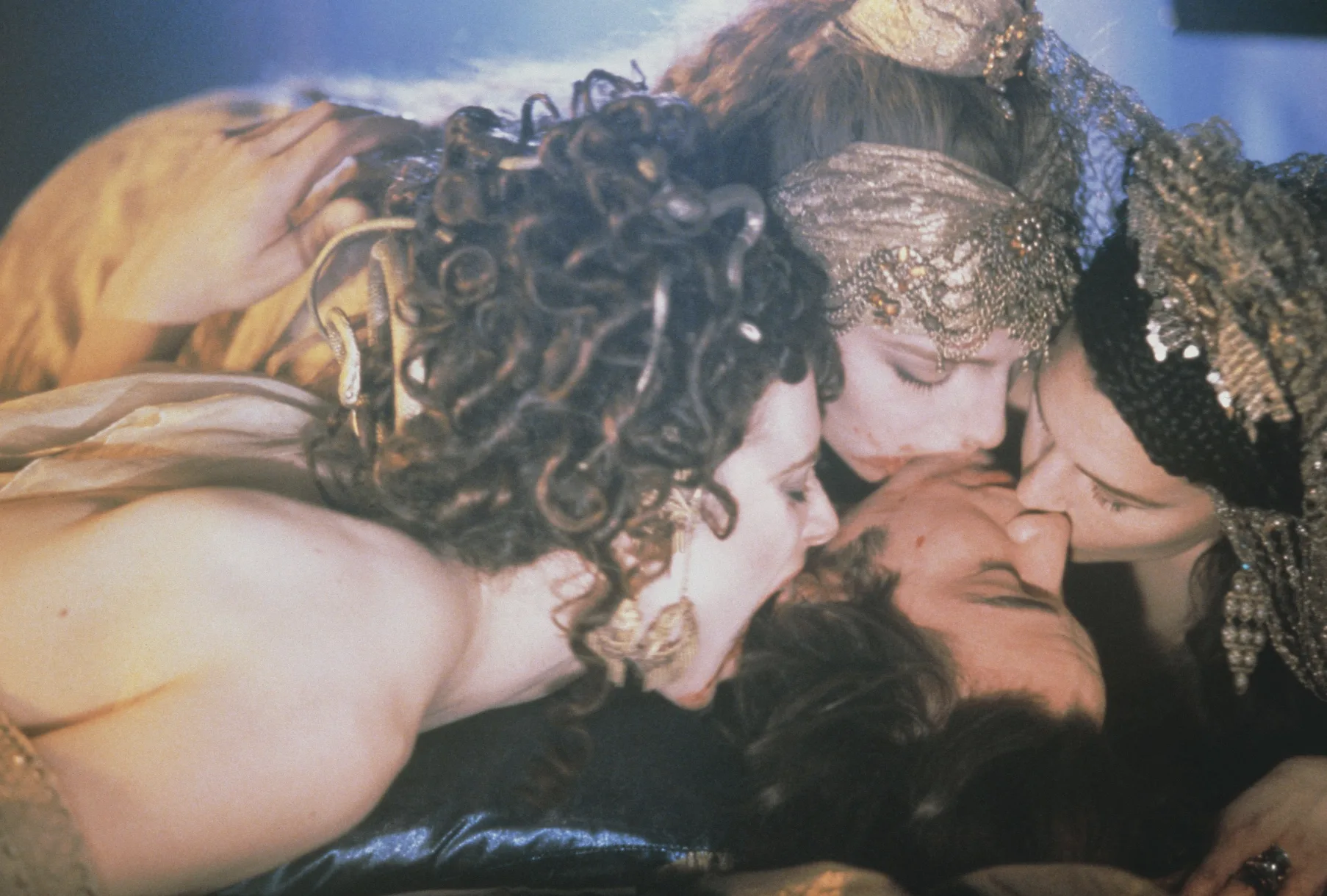
Bram Stoker’s Dracula (1992) Directed by Francis Ford Coppola
The costume designer for this film, Eiko Ishioka, was awarded the Oscar for Best Costume Design – and for good reason. Count Vlad’s armour in a flashback scene is a bloody sculpture; he’s a flayed man whose insides have been turned to armature in a reference to St. Bartholomew, who was martyred by being flayed.
One of many scenes of genius occurs when Keanu Reeves succumbes to Dracula’s three brides. Satan was often portrayed as a highly sexual creature in Christian mythology; potent sexuality is also, therefore, a characteristic of Satan’s associations or minions. In the face of female fangs and the lure of penetration, he becomes passive, following the trend for non-satanic heroes of Dracula remakes to be presented as un-libidinal.
In the Bible, man’s fall occurs in the Garden of Eden. Scenes of temptation in art history and film are commonly depicted in a walled garden. In the movie Dracula (1992), there is a scene of lesbian fervour during a thunderstorm in the castle’s garden between Mina (Winona Ryder) and Lucy (Sadie Frost). If there is one thing that reminds me of Satanic Feminism, it is two women kissing in a walled garden of a vampire castle.
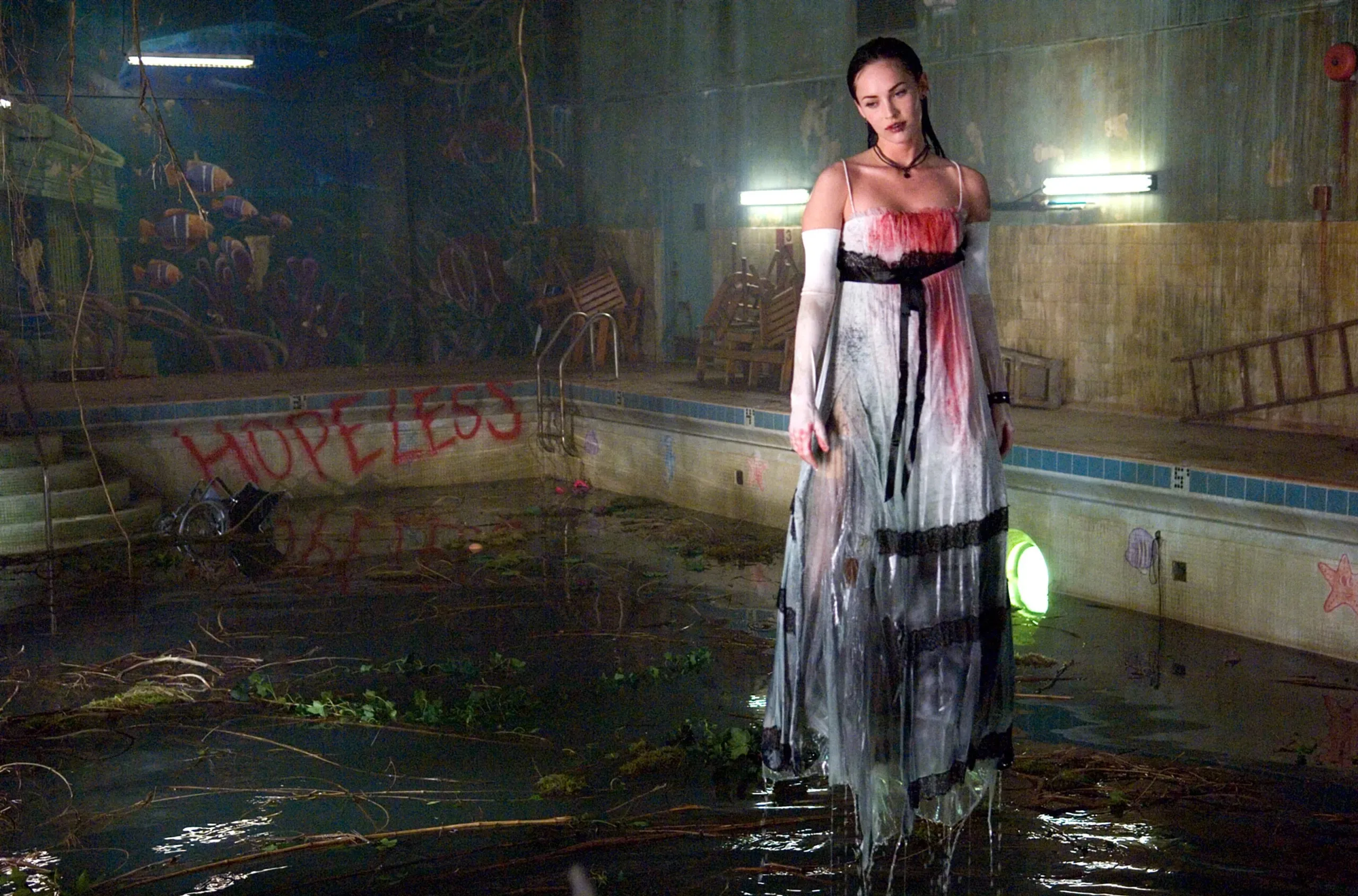
Jennifer’s Body (2009) Directed by Karyn Kusama
It is the story of a young girl who is mistakenly taken for a virgin and sacrificed by a struggling indie-rock band to satan. It is a plot that, in 2024, feels increasingly plausible, except the indie-rock band would be slowcore. Jennifer, played by Megan Fox, is a succubus, a female demon or supernatural entity that seduces men in the Mid-west town of Devil’s Kettle. In more ways than one, Iconic. It also includes a lesbian scene between Needy (Jennifer Seyfried) and Megan that parallels that between Mina and Lucy in Coppola’s film. Must read is Pieces of Jennifer’s Body: Theatrical and Mainstream Horror of the 21st Century in Heidi Honeycutt’s book, ‘I Spit on Your Celluloid: The History of Women Directing Horror Movies’ (Headpress, 2024).
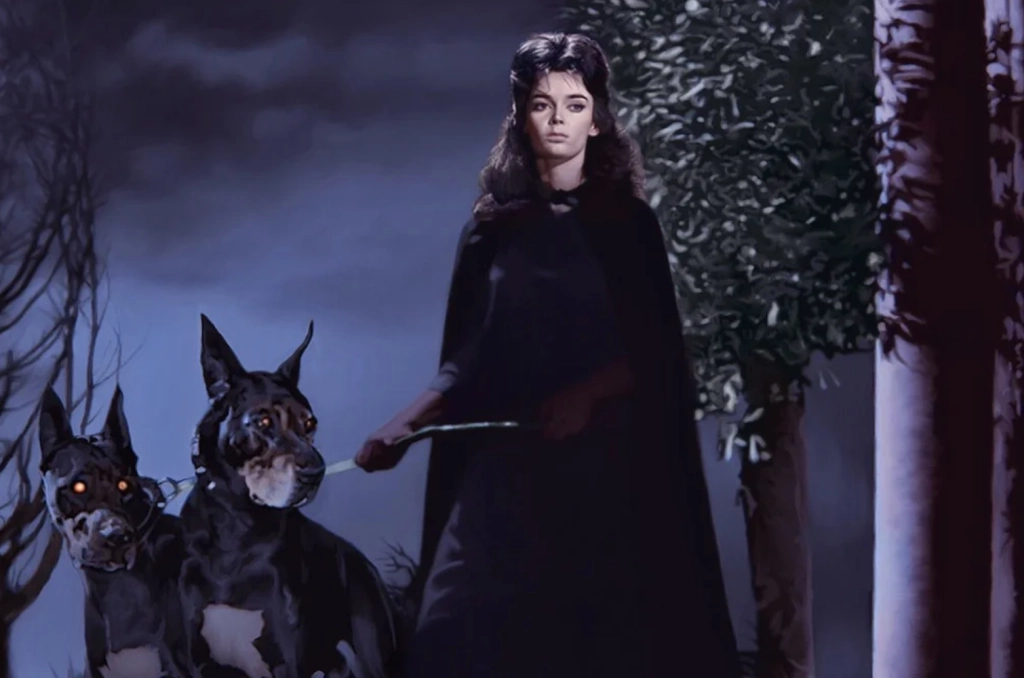
Black Sunday (1960) directed by Mario Bava.
Black Sunday is a gothic horror film starring Barbara Steele. It is loosely based on Nikolai Gogol’s short story Viy (1835). Steele plays the protagonist, Asa, accused of sorcery in 1630s Moldavia and sentenced to death. Two centuries later, she returns to possess the body of her look-alike descendent, Katia—props to the mid-century special effects and 1960s medievalism
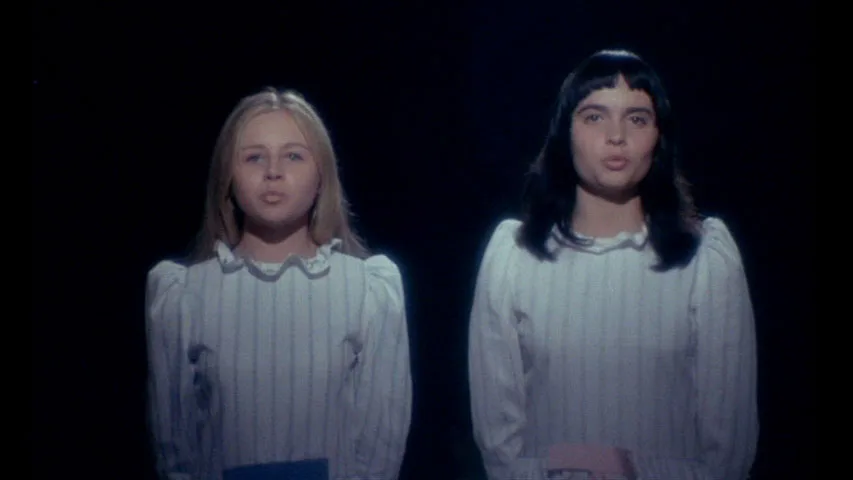
Don’t Deliver Us from Evil (1971) Directed by Joël Séria
Two adolescent French girls at a Catholic boarding school, both from affluent, conservative families, are left in a chateau to wreak havoc. Torturing men, seeking vengeance, engaging in black mass, reading Charles Baudelaire’s Les Fleur Du Mals – It’s a tale of a misspent girlhood with Satan. Perfect.
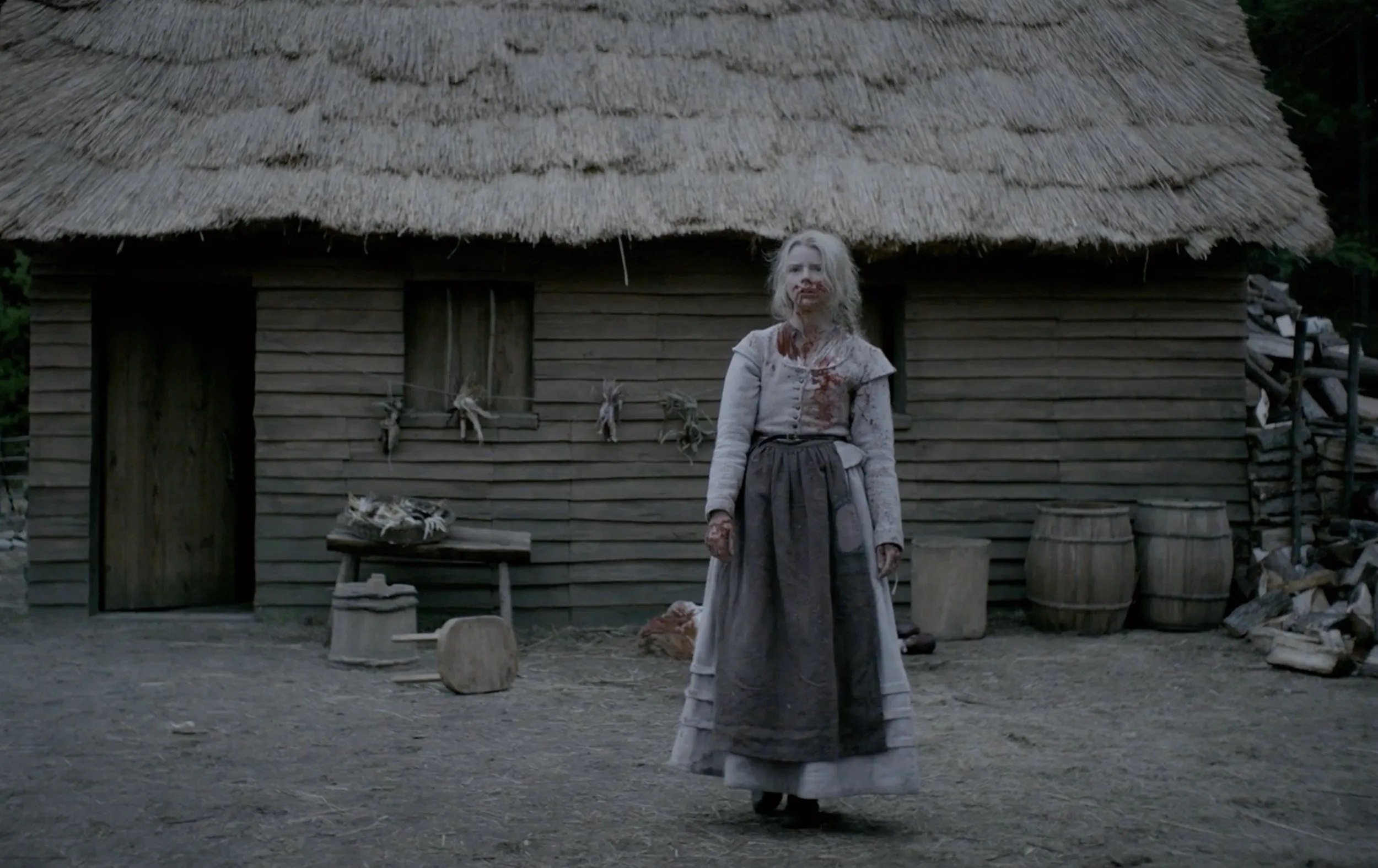
The Witch (2015) Directed by Robert Eggers
Calvinism, that ultra-repressed subsect of Protestantism, forms the perfect candidate for corruption. Based on the witch trials of Connecticut in the 1660s, this is a story of possession and fear. This film is a favourite due to the masterful way Eggers contrasts Thomasin’s purity with the satanic forces around her. Don’t be fooled by appearances.
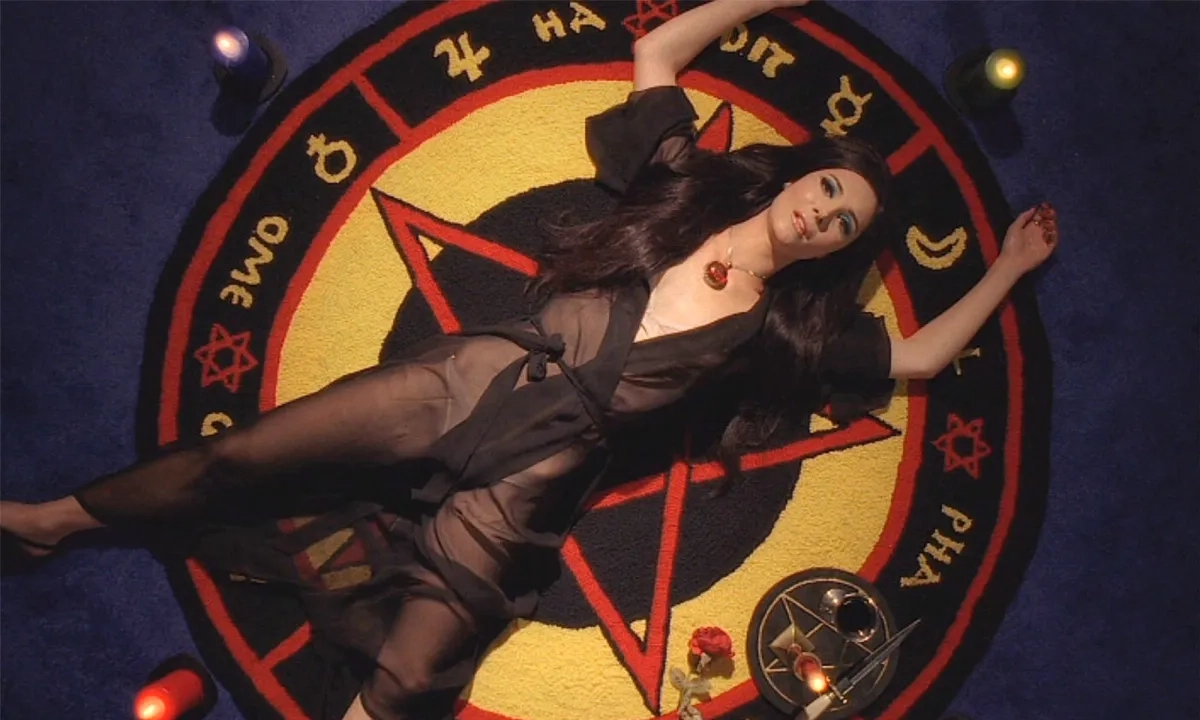
The Love Witch (2016) Directed by Anna Biller
A fairly light-hearted film compared to the rest of this list, Anna Biller’s The Love Witch finds a young witch setting up in an occult-friendly town in California. It’s a pastiche of low-budget horror films of the 1970s, like The Vampire Lovers (1970). Imagine a world in which witches could practice freely; hardly any of these films would exist.

